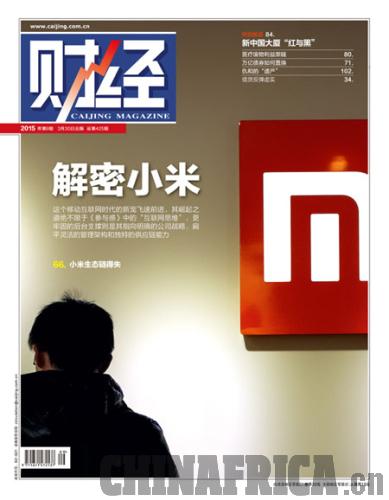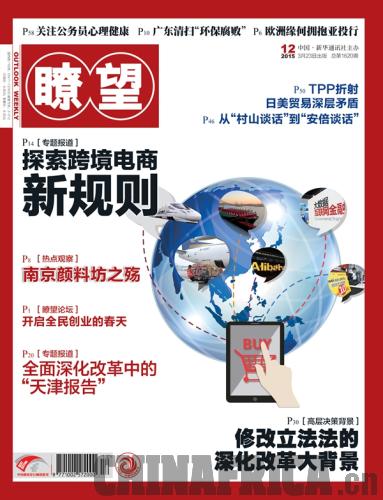| 
SOS for Chinese NeedleCraft
Oriental Outlook
April 2
The earliest record of embroidery in China dates back over 3,000 years. As time elapsed, embroidery became an art form synonymous with Chinese culture.
Sadly, this handcraft has not been efficiently assimilated into modern life and production. In the 21st century, the artisan model of production is separate from today's industrial development, a historical inevitability that some claim has doomed the beleaguered art.
Merely providing a subsidy to those who still practice the craft cannot bridge the gap between the traditional art form and modern life. Few young people are willing to engage in a business that requires highly specialized skills and dexterity but offers low returns. In many places, embroiderers are struggling between traditional handmade craft and more income provided by machine productivity.
It is far-sighted to provide these embroiderers with effective aid. If China's handmade embroidery industry cannot keep pace with the times, many local embroideries will soon be replaced by cheaper machine-made products. The Chinese embroidery industry is sorely in need of rescue.

Decoding Xiaomi's Success Secret
Caijing
March 30
According to U.S.-based International Data Corp., Xiaomi Inc. held 14.8 percent of China's smartphone market in the third quarter last year, becoming the country's largest smartphone maker. Its global market share also jumped to 5.6 percent, making it the world's third largest smartphone maker. Caijing examines the reasons for its success, the bottlenecks it faces, and its new growth strategy.
Though the five-year-old company has not yet gone public, its estimated value has reached $45 billion. Its customer- and service-oriented business model has perfectly met market needs.
Lei Jun, Xiaomi's founder and CEO, predicted last year that the company would encounter a bottleneck once its domestic market share reaches 25 percent. To keep growing even when the smartphone market is slowing down, Xiaomi has chosen the strategy of expanding its production range to televisions and routers. It also plans to invest in more than 100 hardware companies producing intelligent hardware. But despite the clear growth strategy, Xiaomi's success will depend on how effectively it can compete with rivals and manage its expansion.

Boosting Cross-Border E-Trade
Outlook Weekly
March 23
In recent years, China's fast developing cross-border e-commerce has become a new mode of online consumption. According to official estimates, China's cross-border e-commerce value is expected to reach 6.5 trillion yuan ($1.05 trillion) in 2016, with an average annual growth rate exceeding 30 percent. Outlook Weekly looks at the booming cross-border e-commerce industry and the new problems it has brought.
E-commerce industry giants around the globe have been upping their ante to take a dominant position in the new e-commerce era. The Alibaba Group, China's largest e-commerce business, has linked its online shopping platforms, Taobao and Tmall, with overseas markets. In 2014, the export volume of Chinese cross-border online businesses via Alibaba payment platform reached 30.38 billion yuan ($4.9 billion). U.S. e-commerce giants Amazon and eBay have also opened direct purchase channels to China from different countries to tap the Chinese market.
Unfortunately, the rapid development of e-commerce has also created new problems. Consumers are challenged by the language barrier, being overcharged for postal delivery, protracted delivery, and inadequate after-sales services. For the companies, customs clearance difficulties, tariffs, settlement of bills in different currencies, and logistics management have obstructed development. To further developing cross-border e-commerce, these problems must be addressed.
Funerals as Public Service?
Nanfang Daily
March 27
The cost of cemetery burial has been increasing in recent years. In metropolises like Beijing, the high expenses, ranging from 40,000 yuan ($6,500) to hundreds of thousands of yuan, are far from being affordable, according to the recent report on funeral services, the Green Book of Funerals: Report on Funeral Development in China, released by an organization affiliated with the Ministry of Civil Affairs.
This once again raises the much-disputed question of whether the funeral industry falls within the category of public service. It is predicted that with the government's help, excessive commercialization of this service will be curbed.
The limited space available for burials is the major reason for increasing funeral expenses. So it's crucial to promote eco-funerals such as sea burial. The traditional Chinese view is that the dead should be buried in the ground so that the departed soul can rest in peace. Hence it is necessary to persuade people to change their attitudes toward burials and consider other acceptable alternatives.
|